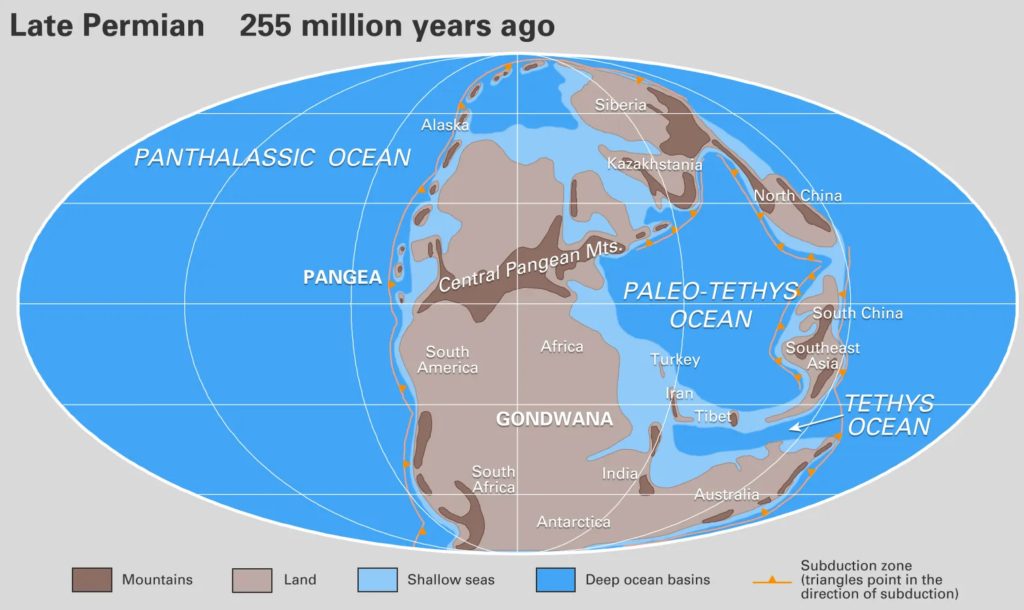Introduction of the formation of the himalayas:
The Himalayas – a realm where colossal peaks pierce the heavens, and ancient glaciers carve paths through sheer rock. These mountains embody breathtaking beauty, teeming with ecological wonders and interwoven with the spiritual traditions of countless generations. For millennia, they have been a source of awe and mystery. But how did these majestic giants come to be?
The answer lies deep within the Earth’s restless heart. The relentless dance of plate tectonics—the immense forces that shape our planet—gave birth to the mighty Himalayas. Millions of years ago, a monumental collision occurred between the Indian and Eurasian plates, transforming the landscape forever.
This article will dive into the extraordinary events surrounding the formation of the Himalayas. We’ll explore:
- The Ancient World: A journey back in time to understand the prehistoric movements of continents.
- Continental Collision: The science behind plate tectonics and the dramatic meeting of the Indian and Eurasian plates.
- Unstoppable Uplift: How the force of this collision created the world’s highest mountain range.
- The Himalayas Today: Their ongoing evolution and profound influence on our planet.
Get ready to unravel an epic tale of geology, where time is measured in epochs, and colossal forces have sculpted one of Earth’s most breathtaking wonders.
Ancient Beginnings – Gondwanaland and the Tethys Sea
To understand the formation of the Himalayas, we must travel far back to a world vastly different from our own. Hundreds of millions of years ago, the Earth’s landmasses were not as we know them today. Instead, they were gathered into a colossal supercontinent known as Pangaea. Within this ancient giant lay another supercontinent called Gondwanaland, and it was here that the story of the Himalayas truly began.
Then, powerful forces within the Earth’s mantle began to drive change. Gondwanaland started to fracture, its pieces slowly drifting apart. The landmass that would become India broke free and embarked on an epic northward journey across the Tethys Sea. Propelled by plate tectonics, this continental fragment moved remarkably, traveling thousands of kilometers over millions of years.
While India drifted northward, the Tethys Sea gradually diminished. Fossil evidence reveals ancient marine life on what is now the high Tibetan Plateau, indicating the gradual disappearance of this once-great ocean. India’s relentless journey was setting the stage for a transformation that would reshape the face of the planet. As the gap between India and Eurasia continued to close, their destinies were sealed. A spectacular collision, an event critical to the formation of the Himalayas, was inevitable.
A Titanic Collision – The Indian and Eurasian Plates Converge
For millions of years, the Indian Plate drifted northward like a colossal island. This journey began when it broke away from the ancient supercontinent Gondwana. While moving, the heavier oceanic portion of the Indian plate dove beneath the Eurasian Plate in a process called subduction. This created a zone where oceanic crust melted back into the Earth’s mantle.
- Subduction and Slowing: As the Indian Plate continued its journey, the subduction process caused the gap between it and Eurasia to shrink steadily. However, a dramatic change was in store. As the lighter, less dense continental portion of the Indian Plate reached the subduction zone, it resisted sinking. Think of it like two pieces of styrofoam – they won’t quickly submerge when pressed together. This resistance eventually halted the smooth process of subduction.
- The Collision: With nowhere else to go, a cataclysmic collision occurred. The two incredibly buoyant continental plates could not subduct under one another. The immense forces crumpled and mashed the landmasses, causing unimaginable pressure and friction. Picture a slow-motion car crash where there’s nowhere for the wreckage to go but upwards.
- The Rise Begins: This relentless clash forced the Earth’s crust to fold and buckle, thrusting upward in a monumental act of mountain building. This marked the beginning of the formation of the Himalayas. This incredible process continues even today, with the Himalayas growing subtly taller each year, a testament to the extraordinary, ongoing forces shaping our planet.
Building the Highest Mountains – Shaping the Himalayas
The initial impact and uplift were only the beginning of the formation of the Himalayas. Let’s delve into the ongoing processes that shape these remarkable mountains:
Folding and Faulting
Imagine immense pressure squeezing a piece of paper. It crumples, creating folds and sometimes tears. Similar processes occurred during the Himalayan formation. Massive forces compressed the Earth’s crust:
- Folding: Layers of rock bend and buckle under pressure, creating wave-like forms within the mountains.
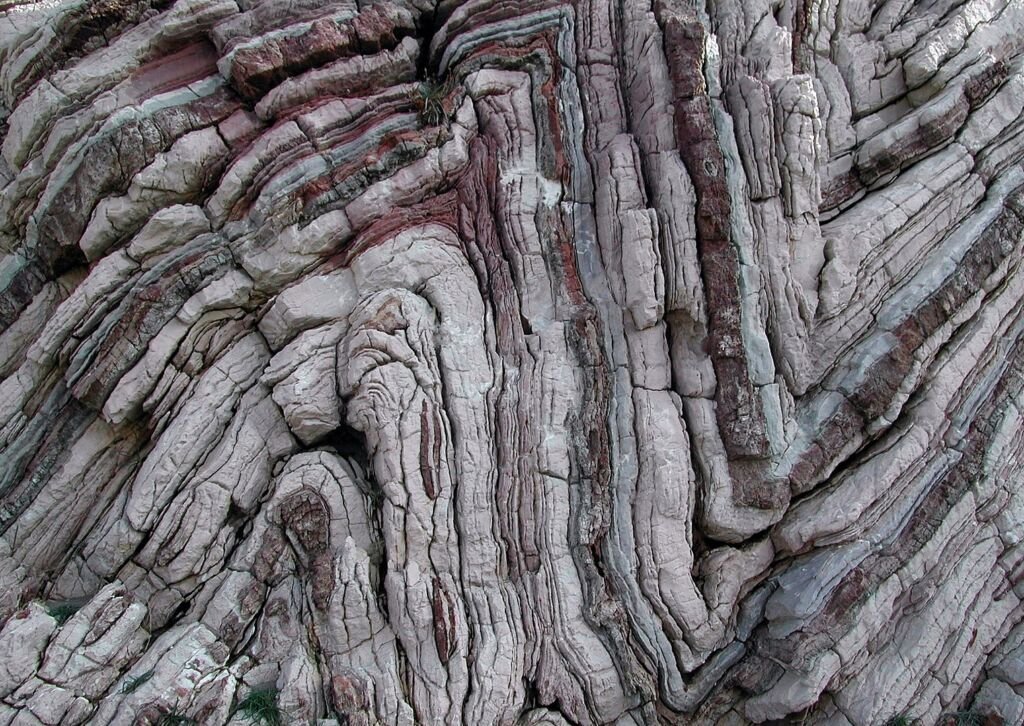
- Faulting: Stress creates fractures in the crust where sections of rock shift and slide past each other.
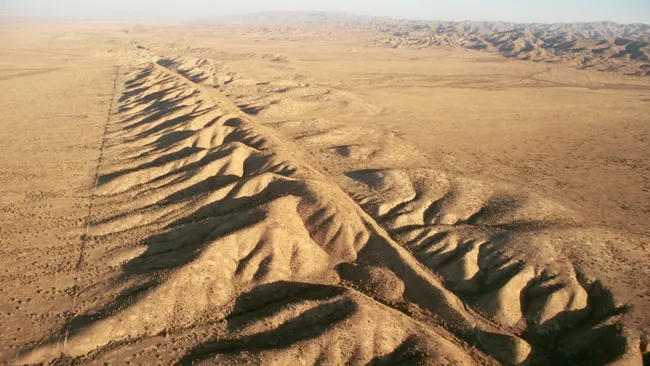
These folds and faults create complexity within the Himalayan landscape, contributing to its striking peaks and valleys.
Exhumation:
Rising mountains push deeper layers of rock upwards. “Exhumation” is the process where overlying rock is removed by erosion, exposing these once-buried rock layers. In the Himalayas, exhumation reveals ancient rocks within the mountain peaks, offering geologists a window into the past.
Erosion: Master Sculptor
Nature’s relentless forces relentlessly sculpt the Himalayas:
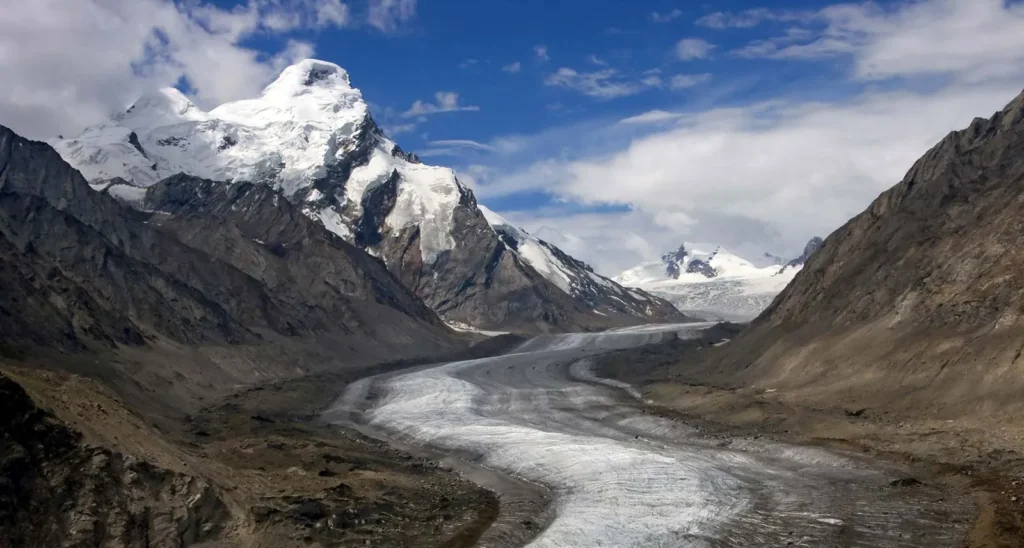
- Water: Powerful rivers cut through the rising mountains, forming deep gorges and valleys.
- Glaciers: Sheets of ice grind over the rocks, carving U-shaped valleys and depositing vast amounts of sediment.
- Wind is another erosional force. These combined effects erode the peaks, balancing the force of tectonic uplift and defining the jagged beauty of the mountains.
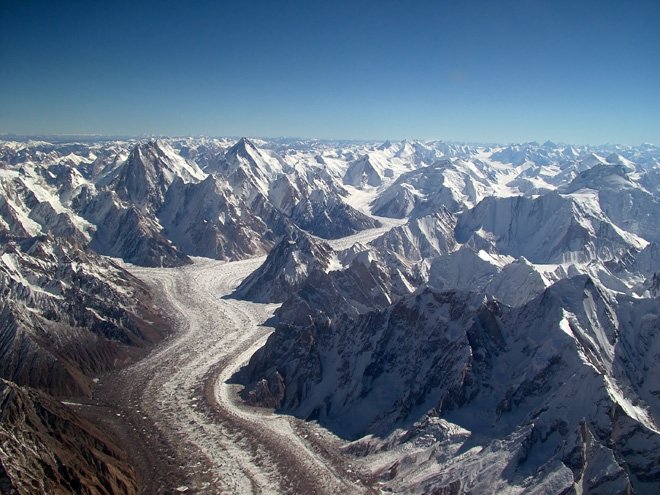
The Himalayas Today – Geology and Landscape
The Himalayan mountain system isn’t a single range but a vast complex of several ranges oriented roughly parallel to each other. Here’s a breakdown of the three major divisions:
● The Greater Himalayas (Himadri):
This innermost range boasts the highest peaks on Earth, including Mount Everest. It’s primarily composed of ancient crystalline rocks like granites and gneisses, thrust upwards from deep within the Earth’s crust during the formation of the Himalayas.
● The Lesser Himalayas (Himachal):
This innermost range boasts the highest peaks on Earth, including Mount Everest. It’s primarily composed of ancient crystalline rocks like granites and gneisses, thrust upwards from deep within the Earth’s crust during the formation of the Himalayas.
● The Outer Himalayas (Siwaliks):
The youngest and southernmost range of the Himalayas, the Siwaliks, are mainly formed from eroded sediments carried down by rivers. These sediments were once part of the rising mountains further north.
Geological Composition:
Besides the above rock types, the Himalayas host a remarkable range of geological treasures. Fossils embedded within sedimentary rocks tell tales of ancient marine life, demonstrating the extraordinary transformations undergone by this landscape. Precious minerals and metamorphic gems provide another testament to the immense heat and pressure involved in the formation of the Himalayas.
Impact on Climate:
The Himalayas act as a colossal barrier, fundamentally shaping the region’s climate.
- The Monsoon: The mountains block moisture-laden winds from the Indian Ocean, forcing them to rise and cool. This causes intense rainfall over the southern slopes of the Himalayas – the monsoon! – creating a rain shadow to the north, resulting in the arid Tibetan Plateau.
- Local Climates: The altitude and variation between Himalayan ranges create pockets of unique climates. Lush valleys, icy peaks, and desert-like conditions can all be found within the greater Himalayan system.
The Himalayas remain a vibrant geological testament to the forces that drive our planet. Understanding their formation reveals their past and offers essential insights into potential future transformations of our world.
Impact of the Himalayas:
The formation of the Himalayas had ripple effects far beyond pure geology. Their presence shapes life, cultures, and entire ecosystems in remarkable ways:
● Rivers: Arteries of Life
The Himalayas act as a colossal water tower. Glaciers and snowpacks high in the mountains give birth to some of Asia’s mightiest rivers – the Indus, Ganges, and Brahmaputra. These rivers are lifelines, providing vital water for drinking, irrigation, and transportation, sustaining hundreds of millions across the Indian subcontinent and beyond.
● Biodiversity: Where Worlds Collide
The dramatic variations in altitude within the Himalayas create an extraordinary range of habitats. Each zone has unique plant and animal life, from humid foothills to alpine meadows and icy peaks. This allows species typical of tropical, temperate, and even near-arctic climates to coexist within the greater Himalayan region. Rare and iconic animals like the snow leopard, red panda, and Himalayan tahr find sanctuary in these mountains.
● Cultural Influence: Mountains of Myth and Meaning
The Himalayas have held spiritual significance for centuries for Hinduism, Buddhism, and other regional faiths. Sacred peaks like Mount Kailash are revered as the abodes of deities, attracting pilgrims worldwide. For mountaineers and adventurers, the Himalayas provide the ultimate challenge, with daring expeditions seeking to conquer peaks like Everest being etched into legend.
● The Power of Formation:
The ongoing geological processes that created the Himalayas continue to shape these landscapes. Erosion from rivers and glaciers transports fertile silt to downstream plains vital for agriculture. Landslides and earthquakes, however, underscore the delicate balance of nature. Understanding the formation of the Himalayas sheds light on the past and the potential forces that could reshape this region in the future.
Conclusion:
The Himalayas tell an extraordinary tale from their origins as part of the ancient supercontinent Gondwanaland to the breathtaking summits they offer today. The tale of the formation of the Himalayas is a tale of continents adrift, cataclysmic collisions, and a relentless push towards the sky. This story underscores the incredible power of plate tectonics, forces capable of reshaping our planet on an awe-inspiring scale.
Each crag, glacier, and river valley of the Himalayas whispers of unimaginable pressure, heat, and the passage of deep time. It’s humbling to imagine India journeying thousands of kilometers northward, driven by the same internal forces that cause our fingernails to grow. Today, we marvel at the fruits of that collision, a landscape that has profoundly shaped ecosystems, civilizations, and the human spirit.
But the story isn’t over. The Himalayas remain a dynamic work in progress. Erosional forces of wind, water, and ice continuously shape the slopes. Even now, tectonic forces push India further into Eurasia, ensuring these mountains will continue their gradual climb. The mountains may rise slowly in human terms, but on a geological timescale, they are in ceaseless transformation.
The formation of the Himalayas is a testament to the Earth as a place of constant change. It reminds us that even the seemingly eternal landscapes around us are snapshots in an evolving planetary drama.
Did you know the Himalayas are still growing? What other geological wonders are you curious about? Let’s talk about it in the comments below!
Did the formation of the Himalayas amaze you? If you found the story of the formation of the Himalayas fascinating, please share it with your friends.
For more stories of incredible natural wonders, subscribe to our blog.


